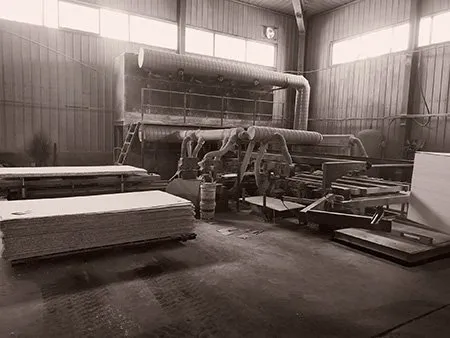WELCOME TO SUPARNA MGO BOARD
Raw Materials of MgO Board
Magnesium oxide board is a fire-resistant building material made through a precise formulation of several raw ingredients. As an essential part of MgO board production, these materials are carefully selected to ensure strength, durability, and environmental performance. Common ingredients include magnesium oxide, fiberglass mesh, perlite, wood fiber, and others.
👉 Click HERE to learn more about the raw materials used in the production of MgO boards.
Magnesium Oxide
A natural, non-toxic inorganic mineral. In MgO board production, it is calcined at high temperatures, ground into fine powder, and then mixed with a magnesium sulfate solution to form the cementitious base.
Magnesium Sulfate
Used as a key binding agent, it is dissolved in water and combined with magnesium oxide powder to create a stable and fast-setting cement slurry.
Perlite
A type of expanded volcanic glass commonly used for insulation. In the production process, it enhances the thermal and fire-resistant properties of the MgO board.
Wood fiber
Also known as sawdust, wood fiber is added to improve bonding and workability. It plays a role in increasing the overall strength and flexibility of the board.
Non-woven fabric
A layer made from oriented or randomly arranged fibers. It contributes to dimensional stability and adds moisture resistance during and after the production process.
A reinforcement material that improves the tensile strength and impact resistance of the board. It is layered into the board during production to prevent cracking and warping.
MgO Board Production
👉 Click the video below to check our production process
The MgO board production process involves several key steps to ensure the final product is fireproof, moisture resistant, and durable. We use advanced technology and precise equipment at every stage to maintain consistent quality and reliable performance. From raw material selection and mixing to forming, curing, and finishing, each step is carefully controlled. Rigorous quality checks guarantee that our MgO boards meet high standards and deliver long-lasting safety and stability.

Material Preparation
Input precise amounts of each raw material based on the production formula. Accuracy at this stage is crucial for board consistency.

Mixing
Transfer raw materials to a high-speed mixer, blending them thoroughly into a uniform cementitious slurry.

Board Production
Layer the non-woven fabric and fiberglass mesh while pouring the slurry to form the basic structure of the board.

Curing Phase I
Initiate the curing process by carefully controlling temperature and humidity to allow the board to begin solidifying.

Demolding
After partial curing, use automated demolding equipment to safely remove the boards from the molds without damage.

Curing Phase II
Let the boards continue curing at room temperature. During this phase, internal chemical reactions strengthen the board over several days.

Soaking (Optional)
In chloride-based mgo board production, boards are soaked in water pools to eliminate excess salts and chemicals that might affect long-term durability.

Drying
Dry the boards naturally under the sun or in a controlled chamber to remove all moisture before cutting.

Cutting
Cut the cured and dried boards according to required sizes using industrial cutting machines.
WELCOME TO SUPARNA MGO BOARD
MgSO4 Board vs MgCl2 Board
There are two main types of magnesium oxide boards based on different chemical binders: magnesium sulfate boards (MgSO4 board) and magnesium chloride boards (MgCl2 board). While both use magnesium oxide (MgO) as the primary raw material, they differ in the following aspects during mgo board production.
1. Raw Materials
In MgO board production, both magnesium chloride boards and magnesium sulfate boards share similar base ingredients such as magnesium oxide, wood fiber, perlite, and fiberglass mesh. The main difference lies in the chemical binder:
Magnesium chloride boards use magnesium chloride (MgCl₂) as the bonding solution, while magnesium sulfate boards use magnesium sulfate (MgSO₄) instead.
2. Production Process
Due to the properties of magnesium chloride, the MgCl₂-based mgo board production requires special attention. If not properly treated, excess chloride ions can cause the boards to absorb moisture from the air, eventually leading to surface condensation, corrosion of steel structures, and long-term durability issues.
To prevent this, an additional soaking step must be included in the production process of magnesium chloride board. This soaking process helps to remove excess chloride ions, ensuring the board does not cause corrosion in future applications. Boards that have undergone this process are not only more stable but also appear whiter after drying.
At Suparna, we apply this improved production method to ensure the reliability and safety of our magnesium chloride boards. Click the video on the right to see the soaking process.

